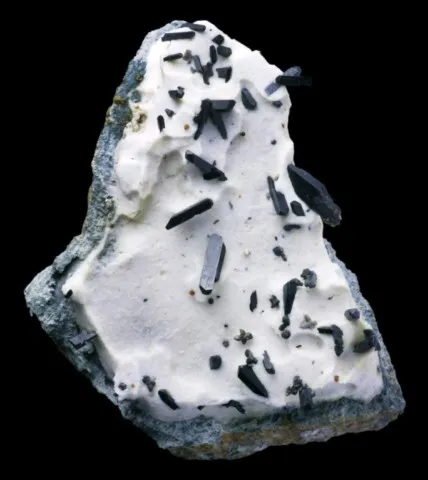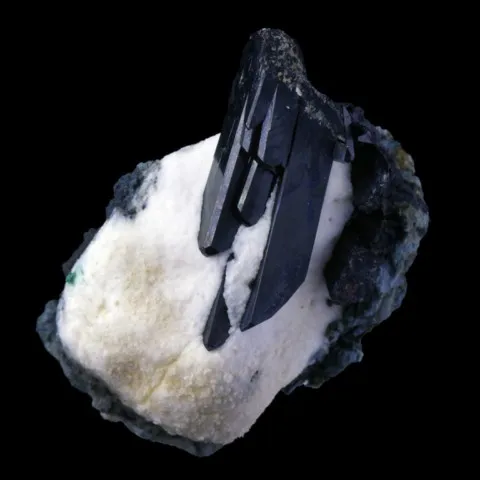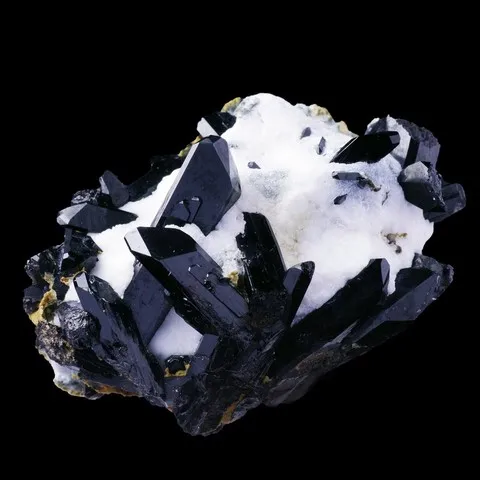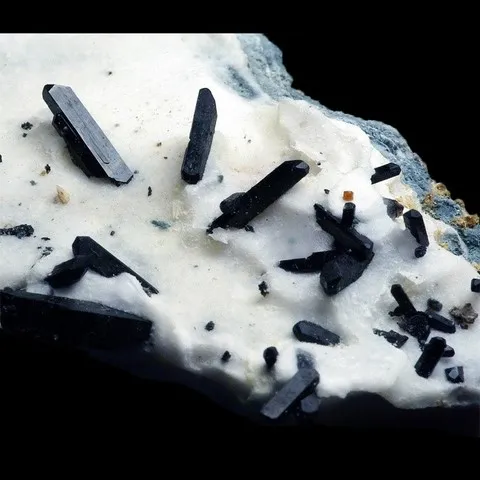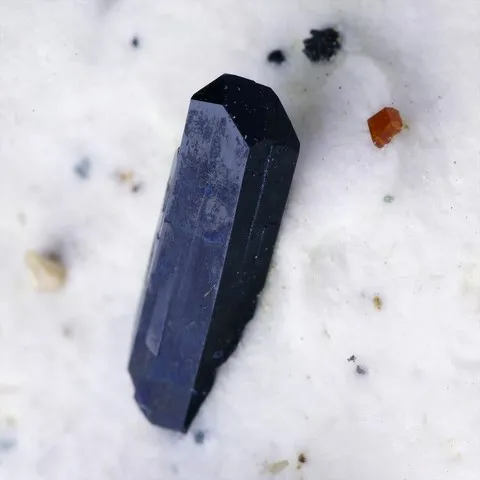NEPTUNITE
Class : Silicates
Subclass : Inosilicates
Crystal system : Monoclinic
Chemistry : KNa2Li(Fe,Mn)2Ti2Si8O24
Rarity : Rare
Neptunite is a rare silicate that has been found in various nepheline syenites and especially in natrolite fissures intersecting serpentinite (California). It is a mineral which owes its name to Neptune, the Roman god of the Sea, because it was discovered in association with aegyrine, which itself takes its name from the Scandinavian god of the Sea. This mineral occurs in monoclinic prisms with square section, terminated by numerous pyramidal faces. Translucent to opaque, its sheen is vitreous and its color black with very dark reddish internal reflections. It has a perfect cleavage according to {110}. It is a rare mineral sought after by collectors, especially when it is associated with benitoite.
Neptunite in the World
Neptunite in France
This mineral is not present in the French underground.
Twinning
Rare twin by interpenetration on {301}.
Fakes and scams
No known fake for this mineral species.
Hardness : 5 to 6
Density : 3.19 to 3.23
Fracture : Conchoidal
Streak : Brown
TP : Opaque to translucent
IR : 1.690 to 1.736
Birefringence : 0.029 to 0.045
Optical character : Biaxial +
Pleochroism : Visible
Fluorescence : None
Solubility : Insoluble
Magnetism : None
Radioactivity : None

